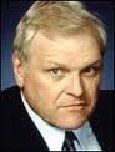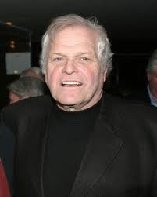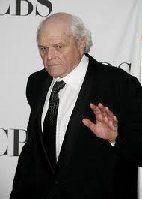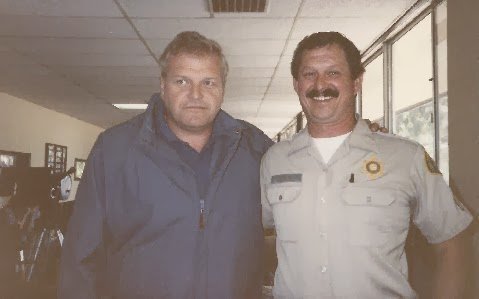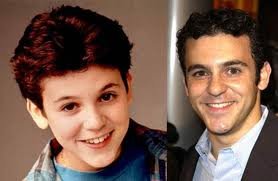Good 48º clear sunny morning.
Yesterday started off clear and sunny and stayed that way all day and we topped at 92º.
Picture of the Day... perfect timing...
Interesting about Paul Winchell...........
Actor Paul Winchell is most famous for voicing Tigger in Winnie the Pooh and for his career as a successful ventriloquist, but the most amazing part of his career was his work as an inventor. The man holds over 30 patents, the most remarkable of which was the first patent for an artificial heart (US Patent #3097366). In 1961, Winchell filed a patent for an artificial heart after working on the device with doctors at the University of Utah. It is believed to have inspired the design of the Jarvik 7, the first artificial heart to be transplanted in a person.
- December 21, 1922, New York City
- June 24, 2005, Los Angeles
- Natural causes
- Jean Freeman (m 1974 - 2005), Nina Russel (m 1961 - 1972)
Paul Winchell was an American ventriloquist, comedian, actor, voice artist, humanitarian, and inventor whose career flourished in the 1950s and 1960s. From 1950 to 1954, he hosted The Paul Winchell Show, which also used two other titles during its prime time run on NBC: The Speidel Show, and What's My Name?. From 1965–1968, Winchell hosted the children's television series Winchell-Mahoney Time.
Winchell made guest appearances on Emmy Award-winning television series from the late 1950s to the mid 1970s, such as Perry Mason, The Dick Van Dyke Show, McMillan & Wife, The Donna Reed Show, and appearances as Homer Winch on The Beverly Hillbillies. In animation, he was the original voice of Tigger, Dick Dastardly, Gargamel, and other characters.
Winchell, who had medical training, was also an inventor, becoming the first person to build and patent a mechanical artificial heart, implantable in the chest cavity (US Patent #3097366).[1] He has been honored with a star on the Hollywood Walk of Fame for his work in television.
Winchell was born Paul Wilchinsky in New York City on December 21, 1922, to Solomon Wilchinsky and Clara Fuchs. His father was a tailor; his grandparents were Jewish immigrants from Russian Poland and Austria-Hungary. Winchell's initial ambition was to become a doctor, but the Depression wiped out any chance of his family's ability to afford medical school tuition. At age 13, he contracted polio.
Winchell was a pre-med student at Columbia University. He graduated from The Acupuncture Research College of Los Angeles in 1974, and became an acupuncturist. He also worked as a medical hypnotist at the Gibbs Institute in Hollywood. He developed over 30 patents in his lifetime. He invented an artificial heart with the assistance of Dr. Henry Heimlich, inventor of the Heimlich maneuver, and held an early but not the first U.S. patent for such a device. The University of Utah developed a similar apparatus around the same time, but when they tried to patent it, Winchell's heart was cited as prior art. The university requested that Winchell donate the heart to the University of Utah, which he did.
There is some debate as to how much of Winchell's design Dr. Robert Jarvik used in creating Jarvik's artificial heart. Dr. Heimlich states, "I saw the heart, I saw the patent and I saw the letters. The basic principle used in Winchell's heart and Jarvik's heart is exactly the same."
Jarvik denies that any of Winchell's design elements were incorporated into the device he fabricated for humans — the Jarvik-7, which was successfully implanted into Barney Clark in 1982.
Winchell established more medical patents while working on projects for the Leukemia Society (now known as the Leukemia & Lymphoma Society) and the American Red Cross. Other devices which he invented and patented include a disposable razor, a blood plasma defroster, a flameless cigarette lighter, an "invisible" garter belt, a fountain pen with a retractable tip, and battery-heated gloves.
From Mr. Food
Sometimes you want something sweet that doesn't weigh you down and these Lemon Refrigerator Bites are just the trick! They're light and refreshing and perfect for the summer weather! These creamy, chilly, little bites of Heaven are exactly what everyone is gonna be craving this time a year, so go ahead and make a double batch of this lemony-cool dessert.
- 1 1/2 cups graham cracker crumbs
- 1/4 cup sugar
- 1/2 cup (1 stick) butter, melted
- 1 (8-ounce) package cream cheese, softened
- 1 (14-ounce) can sweetened condensed milk
- 1/2 cup fresh lemon juice
- 1 teaspoon finely grated lemon zest
- 2 cups frozen whipped topping, thawed
- Coat an 8-inch square baking dish with cooking spray. In a medium bowl, combine graham cracker crumbs, sugar, and butter; mix well. Press crumb mixture firmly into prepared baking dish and refrigerate until ready to fill.
- In a large bowl, beat cream cheese and condensed milk until smooth. Beat in lemon juice and lemon zest. Stir in whipped topping just until mixed. Pour into graham cracker crust.
- Refrigerate 6 hours, or until filling is firm. Slice into 2-inch squares and serve.
****Garnish with lemon zest and blueberries, or your favorite fresh fruit.
Historically this date.....
1850 – U.S. President Zachary Taylor dies and Millard Fillmore becomes the 13th President of the United States.
1922 – Johnny Weissmuller swims the 100 meters freestyle in 58.6 seconds breaking the world swimming record and the 'minute barrier'.
And births this date include....
1928 – Vince Edwards, American actor (d. 1996)
LOVED Dr. Ben Casey TV show!!
1932 – Donald Rumsfeld, 13th and 21st United States Secretary of Defense
1938 – Brian Dennehy, American actor
He was filming at the BC Range once and I met him. OMG, he is a GIANT of a man! Nice too. Brian and Jerry 1986.
1957 – Kelly McGillis, American actress
1976 – Fred Savage, American actor
All I know. Nuff said. Happy Thursday. Ciao.
xo Sue Mom Bobo
Observed each year on July 9th, National Sugar Cookie Day honors the ever-popular and delicious sugar cookie.
A holiday favorite and very easy to make, sugar cookies disappear quickly once they come out of the oven. Most sugar cookies include sugar, flour, butter, eggs, vanilla, and either baking powder or baking soda. While most people have the ingredients on hand at all times, some of the ingredients should be fresh for the best outcome. Children enjoy baking and decorating anytime someone makes a batch of sugar cookies.
The sugar cookie is believed to have originated in the mid-1700s in Nazareth, Pennsylvania. German Protestant settlers created a round, crumbly and buttery cookie that came to be known as the Nazareth Cookie.
Today, sugar cookie making and decorating has become an art form for kids and adults alike. Starting with the shape of the cookie, the dough is formed with either a cookie cutter or other methods of cutting and shaping the dough. Once the cookie is baked, the cookie artist adds colored frosting or icing. Sprinkles, edible glitter, colored sugars, and additional details may be added. Some cookies receive so much detail, it’s almost a shame to eat them.







